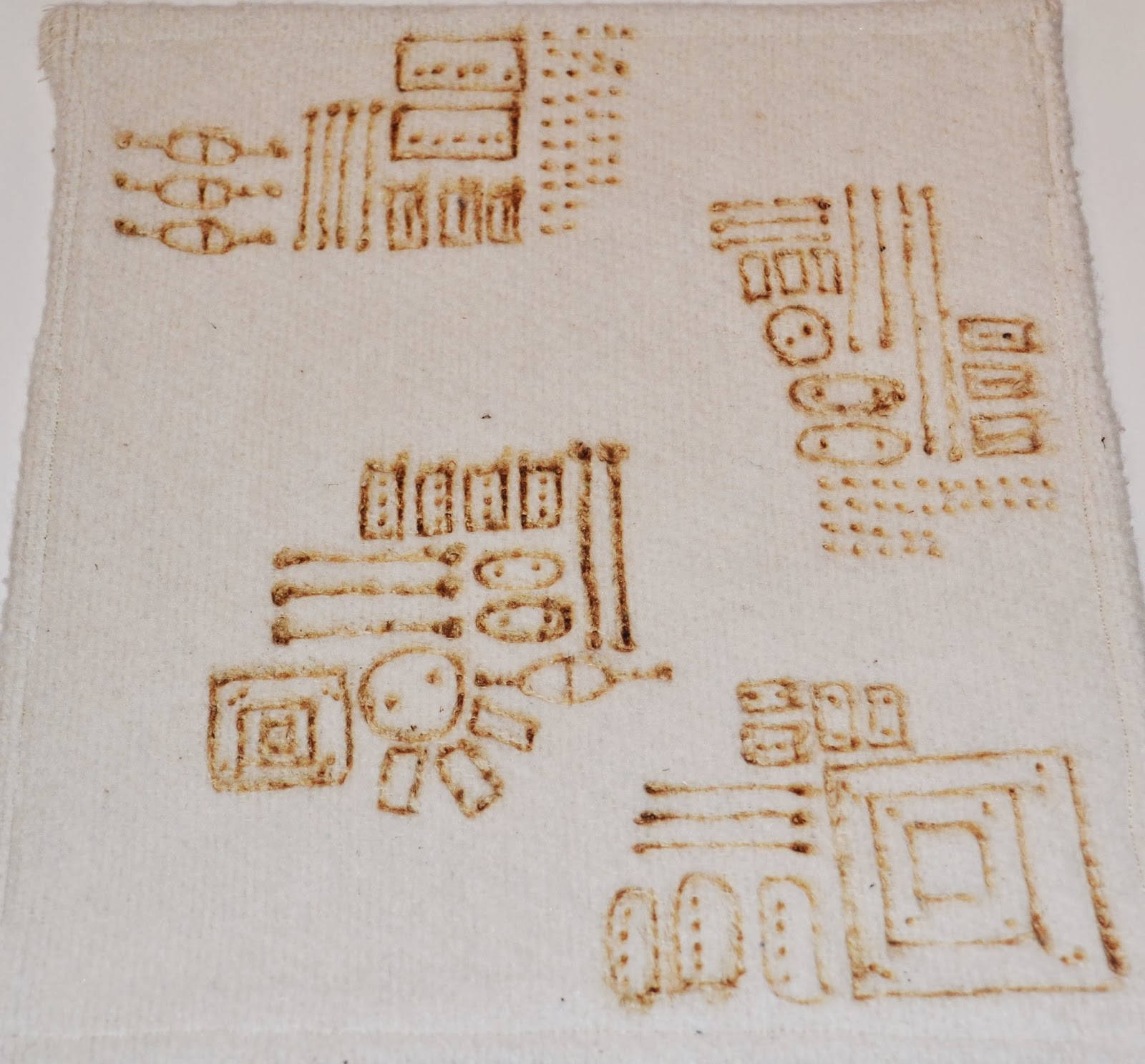My first tutorial was helpful in regards to discussing how
to develop my photographs further. Drawing exercises were suggested to
experiment with different drawing styles. I was set the task of finding a new
drawing style before the next week.
I decided to create mood boards to visualise the research
I'd completed, keeping myself inspired. Being a visual person, images are very
useful to me. Below are examples of Ella Doran’s work, a designer I completed
work experience with over the summer. She translates photographic images into
repeat patterns. Her images are of everyday things such as Bikes of Hackney,
which is where she lives, and the Letterpress pattern inspired by a letterpress
in her studio. I thought this was an interesting way of working and it was
after this that I decided to document what I saw through photography.
Another artist that I have researched is Tilleke Schwarz whose
main context of work is embroidery. Her process consists of embroidering what
she's thinking at that time, which is an interesting process because passing thoughts
are quick but completing embroidery is a slow process. I find that her style of
work is similar to the graffiti I have seen because it consists of a lot of
overlapping random imagery.
I have researched two new artists that I wish to bring to
next week's tutorial and that is the work of Harriet Popham, who's work
consists of watercolours and illustrative quality. I think that her
combinations between foreground and background are very interesting because she presents them in different styles of drawing, eg The
circular image below consists of a water coloured background and black
and while illustrative detail over the top, playing with background and foreground effects adding more depth to a piece. She also creates designs for interiors, such as wallpaper.
The other artist I wish to discuss is Abigail Ahern. She
incorporates graffiti in the backgrounds of her painting and also designs wall paper of a photographic quality, which is very much like Ella
Doran. She photographs walls and rustic tiles,
taking into account the range of textured surfaces and uses them to create
repeat patterns. I found it interesting how Abigail Ahern reflected the
different textures through the patchwork dog cushion covers, enabling me to see how one pattern can influence another in order to create a collection.
From researching these artists I have come to understand
that I am interested in foreground and background combinations, and creating
visuals from the everyday. Another aspect I like about the work is the busy
appearance and use of repeat patterns. I wrote in my learning agreement that my
original inspiration was from graffiti and I have come to understand that I was
interested in the same concept of foreground and background combinations.
Regarding Graffiti, there can be a wide range of text and imagery that is
joined together by the brick pattern in the wall underneath.
 |
| Abigail Ahern's wallpaper in centre |




















































